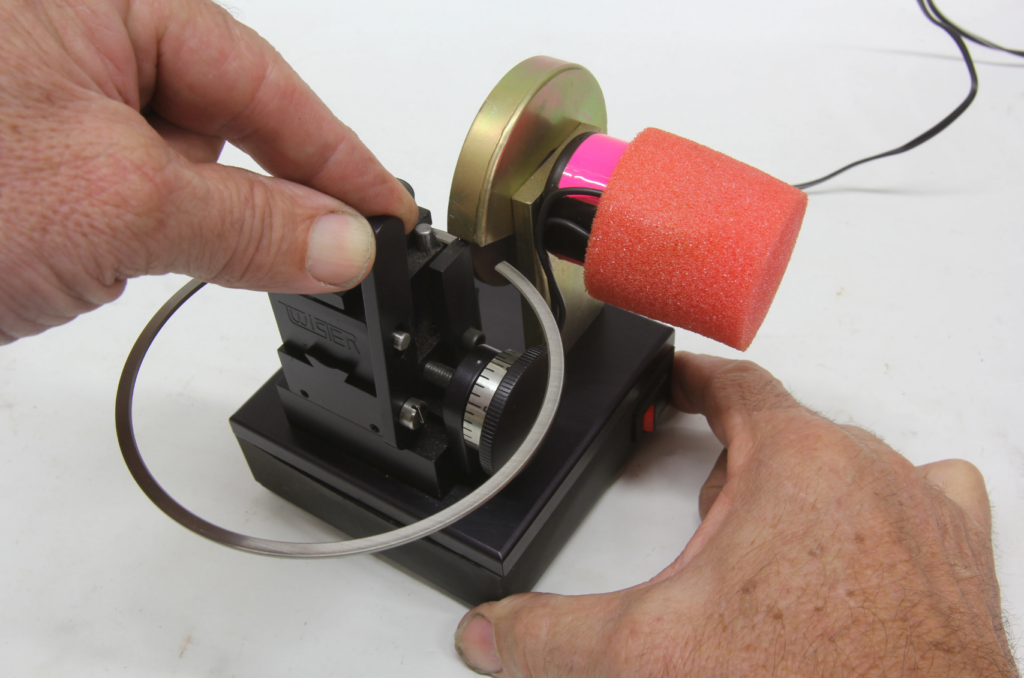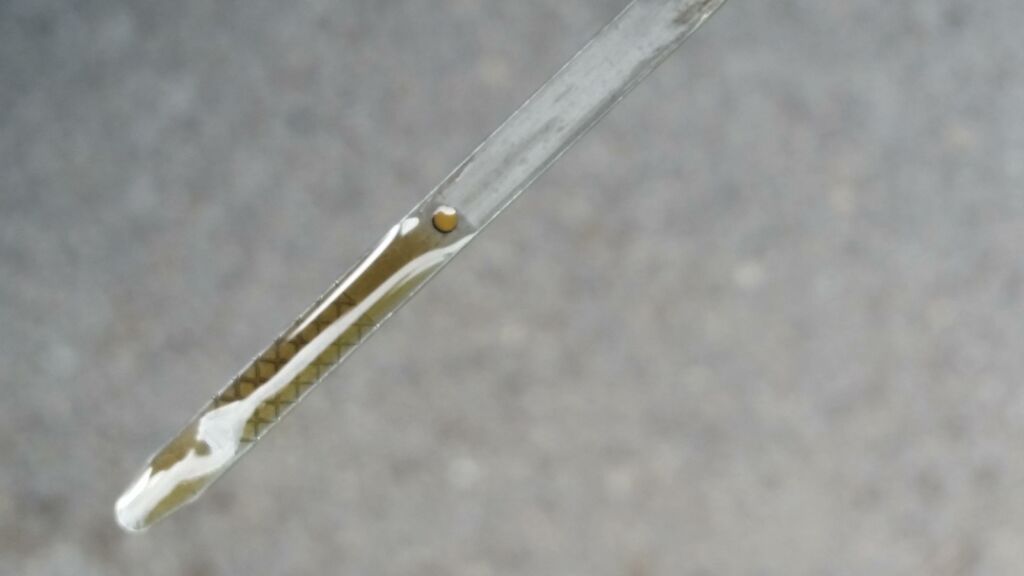How To Avoid Common Causes of Blow-By and Oil Consumption
The combustion process is never perfect. Even the best street engine never seals all that combustion pressure. A certain amount of cylinder pressure will always find its way into the oil pan. Mixed by a spinning crankshaft, combustion by-products churn with partially vaporized oil in a witch’s brew that, if not properly vented and managed, can be problematic.
Windage is also involved in any discussion regarding crankcase pressure since oil is the viscous fluid that we must deal with. It’s the combination of oil and pressure that creates this windage so we must deal with them together.

Have you ever seen a street engine with the dip stick partially pushed out of its tube? If so, that’s a subtle clue that sufficient pressure has built up in the engine to force that stick upward enough to unseat it and vent the pressure. Few street engine builders monitor blow-by and yet it can have a significant impact on performance. Most deal with it by either installing a PCV valve or just additional vents. While sufficient vents will alleviate pressure that can otherwise push gaskets right out of place, all this really amounts to is applying a band-aid over an arterial wound. The real fix is to address the source of the problem.
It doesn’t take an aeronautical physicist to know that the majority of any blow-by issues can be traced to leakage past the rings. But there are several different paths. Yes, a weak connection between the ring face and the cylinder wall is a common source, but don’t ignore the possibility that the pressure is squirting past the back side of either the top or second ring due to worn ring groove clearances. Rings are designed to fit with very specific clearances to allow the rings to function properly. Twist is built into both the top and second rings to allow them to function at their highest efficiency. If the ring lands are worn or not completely flat, this will reduce sealing efficiency. The only proper repair for this issue is a new set of pistons.

Wide ring end gaps are a common source of leakage. This is the reason that JE offers 0.005-inch oversize rings to allow the engine builder to set custom end gaps for a performance engine. We should even add oil control rings into this discussion since choosing low oil ring tension can overload the amount of oil the second ring must handle and therefore contribute to both excessive oil consumption as well as increased blow-by. Standard tension oil rings are the best choice for a street engine.

There is increasing information out there on the advantages of what used to be called plateau honing technique. This process essentially removes the peaks of a standard honing procedure which creates a slightly smoother upper portion of the honing marks while leaving the valleys that retain the oil that lubricate both the piston and rings. This process is more difficult and time consuming to produce but the result is well worth the effort since it produces a finer honing pattern that improves ring seal and stabilizes oil consumption.
Another classic approach to reducing windage is to control the amount of oil whipped around the crankshaft as it spins. There are catalogs full of oil pans, windage trays, scrapers, and other devices that can contribute. We’ll look at just a few simple ideas that may help reduce this windage issue.

The easiest and least expensive way to minimize windage is to avoid over-filling a wet sump engine with oil. This may sound simple, but we’ve seen this happen many times. In a situation that recently occurred at Westech Performance, dyno operator Steve Brule’ witnessed a significant dip in oil pressure above 5,000 rpm on a 600 hp 468ci big-block Chevy. The owner had inadvertently over-filled the engine by two quarts of oil in the deep-sump pan –adding 9 quarts in an advertised 8-quart pan.
Steve first tested this oil pressure problem by adding a half quart (to be safe) and recorded an even greater pressure drop. He eventually drained 2 ½ quarts of oil from the engine and not only did the oil pressure stabilize, but the power improved by a solid 20 hp as well. This reveals just how much horsepower can be lost to oil whipping around the crankshaft at high engine speeds.

Not all windage issues will be that simple, but often just using a high-quality synthetic oil will improve the oil’s high temperature stability and reduce the amount of vapor created in the crankcase. It’s a small point but worthy of consideration.
Another simple addition that will reduce the amount of crankcase pressure at part throttle for street engines is a properly functioning PCV valve. A company called M/E Wagner has produced a highly functional adjustable billet PCV valve that allows the user to custom tailor the amount of crankcase vapor pulled from the engine. It is a two-stage valve that offers tuning advantages that were previously not achievable with stock valves.

This valve works so well that it is often accompanied with a catch can or a vapor separator system. These simple devices work to separate liquid oil from the crankcase vapor to minimize the volume of oil pulled into the intake manifold through the PCV valve. This can be an issue with the adjustable PCV valve as it performs far superior to common PCV valves that often do very little.

Vapor separators are an excellent idea for many street power plants – especially LS engines which have difficulty managing crankcase vapors. Early evidence of this was LS intake manifold runners and plenums coated in engine oil. Many enthusiasts thought the oil came from poor factory cylinder wall prep but the truth is that poor baffling of the crankcase vapors and higher crankcase pressure from the compartmentalized engine block caused most of these early oil control issues.
While a crude catch can be fabricated out of your favorite aluminum beverage can, the better systems use some type of internal baffle to allow the can to cool the hot incoming vapor, separating the liquid oil vapor into a separate reservoir that can later be drained.


A worn cylinder bore is probably the biggest contributor to oil consumption and blow-by. However, it is equally important to begin any build/rebuild with proper cylinder wall preparation. Bore dimension and surface finish are vital to a healthy and long-lasting engine.
Another popular technique to reduce windage is to increase the volume of the crankcase with a deeper oil pan. Competition engines will often use a very large oil pan to move the oil away from the spinning crank as far as possible. Often this is not possible for street cars due to low ground clearance issues, but a wider pan can contribute to improved oil control while containing a sufficient volume of oil that is far enough away from the crank to reduce windage.
If you are planning a new engine, consider the advantages of using a standard pressure and volume oil pump. If the oil clearances in the engine are set properly, a standard pressure and volume pump will deliver more than sufficient oil pressure. Adding a larger high-volume pump often results in the pump merely by-passing more oil which only increases oil temperature because most oil pumps internally re-circulate the oil rather than dumping it back in the pan. Either way, this is wasted effort.

Another idea that works extremely well is a vacuum pump that runs off the accessory drive. The pump is connected to the crankcase through a baffled connection with the rest of the engine sealed. This creates low pressure inside the engine. Drag racers use these vacuum pumps to free up horsepower otherwise expended to push the pressure around inside the crankcase. It’s not uncommon to see 8-10 hp gains from a simple vacuum pump. A further advantage is vacuum pumps do a wonderful job of virtually eliminating engine oil leaks. The disadvantage is their high initial cost.
If you are considering investing in a vacuum pump system, keep in mind the crankcase will now need to be completely sealed. This will also require a dedicated sealed inlet to allow you to add oil to the engine easily. Several companies also offer a spring-loaded vacuum relief valve that can be pre-set to a given vacuum level.

Despite many of these gadgets that are often can be as much prestige bling items as functional, the best way to control crankcase pressure and vapors is to minimize the leakage past the rings. That will do more to improve performance and operate with a cleaner engine than anything else you can do.
